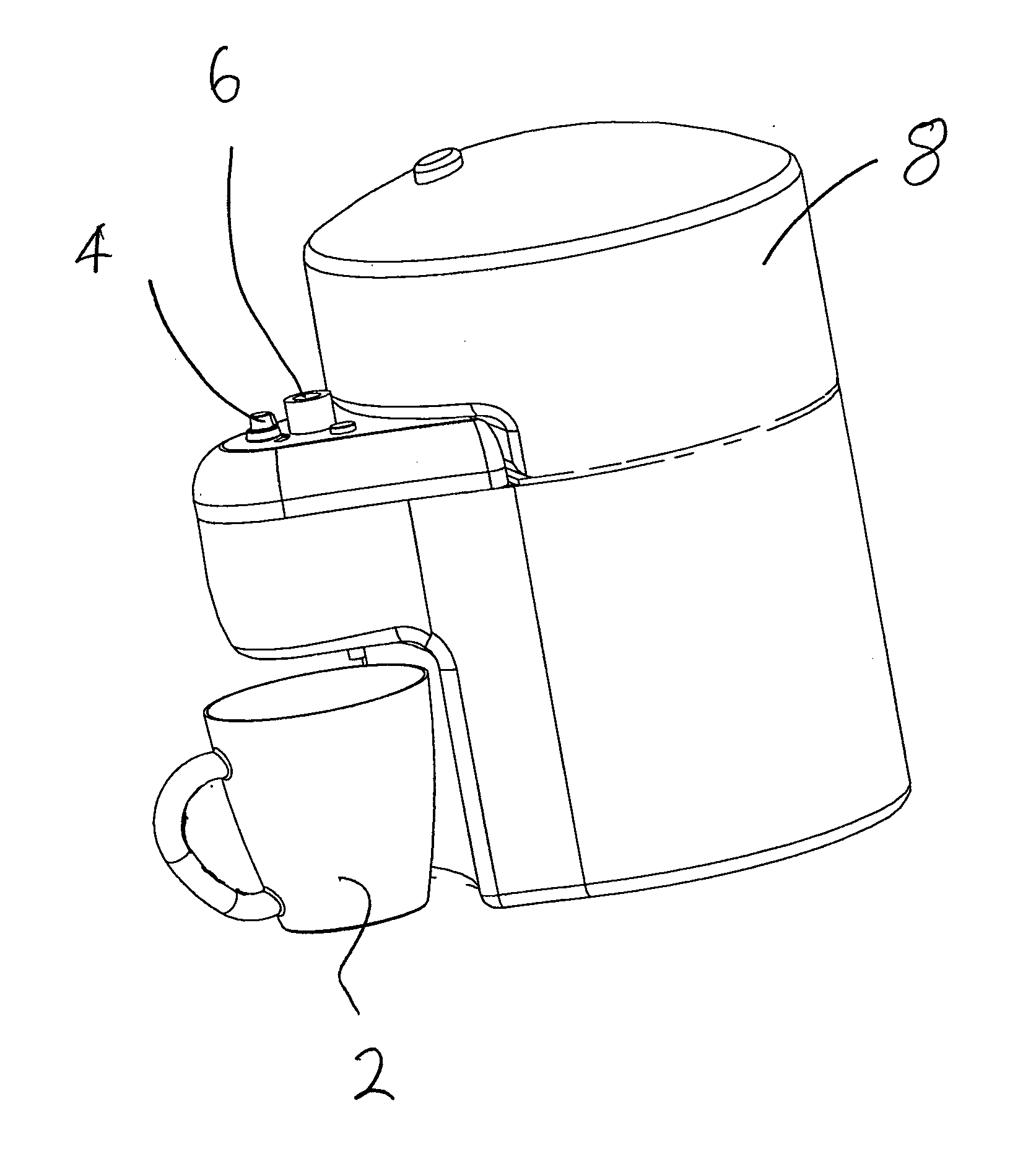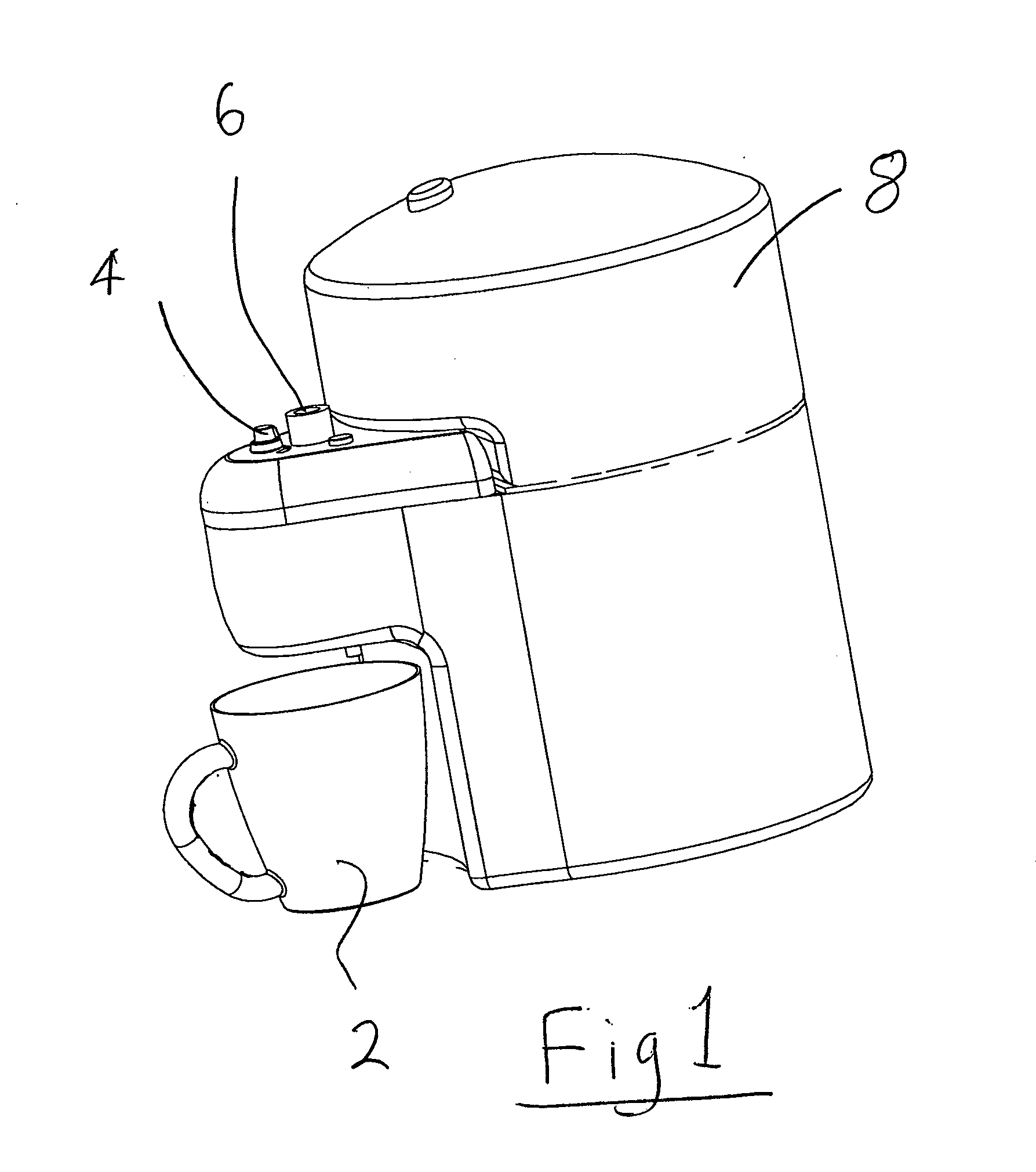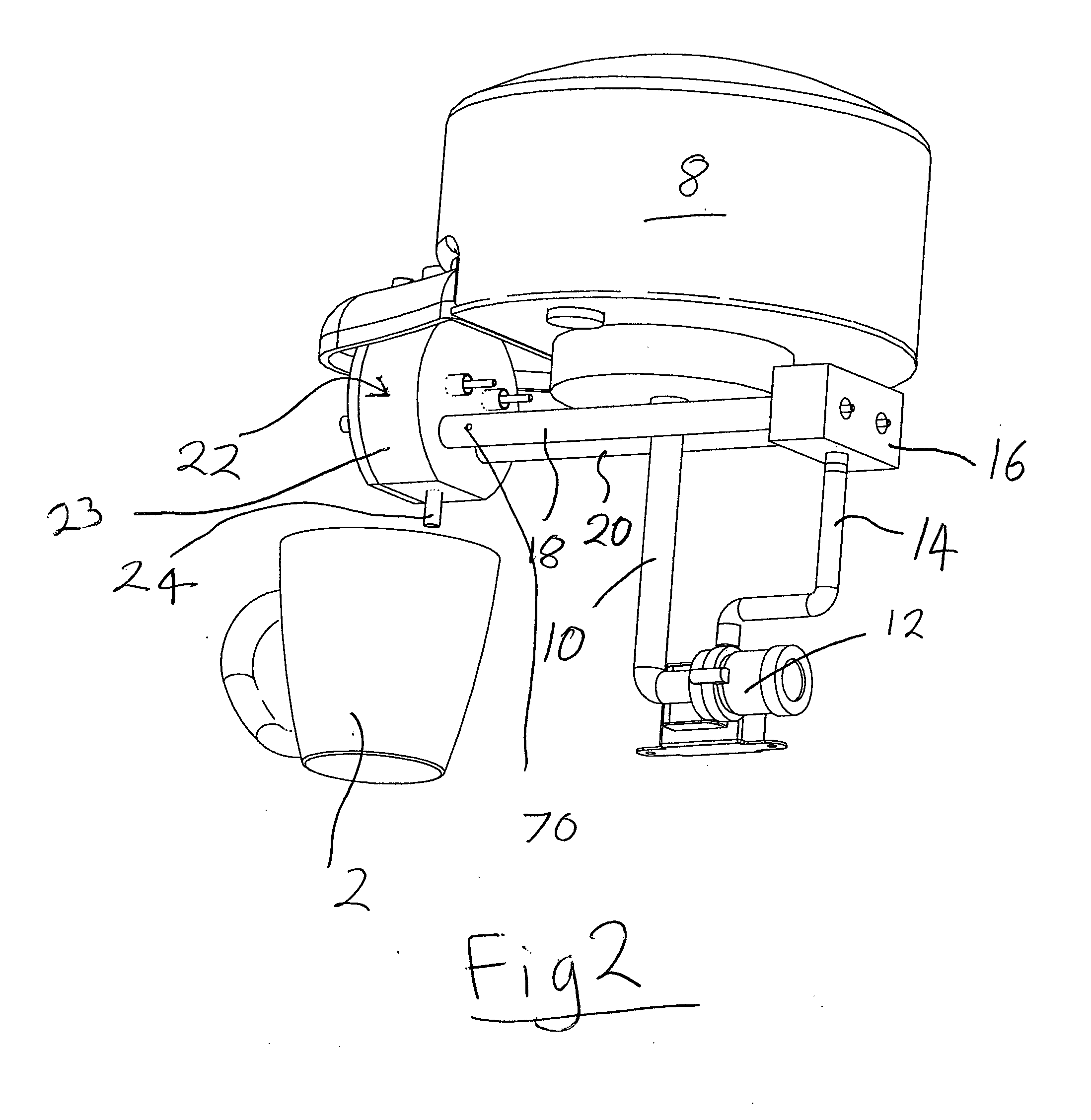Heaters
a technology of heat exchangers and heat exchangers, applied in the field of heat exchangers, can solve the problems of inability to boil water, bubbles to collapse, significant drawbacks in the technology, etc., and achieve the effects of accurate and stable determination of output temperature, accurate temperature measurement, and accurate and stable results
- Summary
- Abstract
- Description
- Claims
- Application Information
AI Technical Summary
Benefits of technology
Problems solved by technology
Method used
Image
Examples
Embodiment Construction
[0076]FIG. 1 shows an embodiment of the invention which can be used to dispense boiling water, on demand into a cup 2 for making hot beverages. The temperature of the water can also be adjusted by turning a knob 4. The dispense temperature can be varied from 65° C. to just boiling and beyond that to ‘rolling boil’ where more energy is put into the water to ensure that the whole volume is fully boiling The amount of water to be dispensed is controlled by a second knob (not shown). Also visible is a steam outlet 6. On the upper part of the main part of the apparatus is a water tank 8 which must be filled periodically by a user.
[0077]FIG. 2 shows some of the main internal components of the apparatus with other parts omitted for clarity. From here may be seen the water tank 8, extending downwardly from which is an outlet pipe 10 connected to the inlet side of a low voltage, centrifugal pump 12. The outlet side of the pump 12 is connected via a tube 14 to a water distribution plenum bloc...
PUM
 Login to View More
Login to View More Abstract
Description
Claims
Application Information
 Login to View More
Login to View More - R&D
- Intellectual Property
- Life Sciences
- Materials
- Tech Scout
- Unparalleled Data Quality
- Higher Quality Content
- 60% Fewer Hallucinations
Browse by: Latest US Patents, China's latest patents, Technical Efficacy Thesaurus, Application Domain, Technology Topic, Popular Technical Reports.
© 2025 PatSnap. All rights reserved.Legal|Privacy policy|Modern Slavery Act Transparency Statement|Sitemap|About US| Contact US: help@patsnap.com



